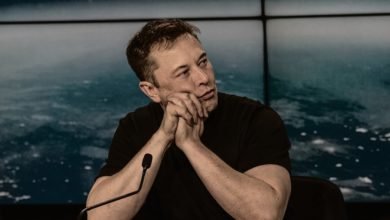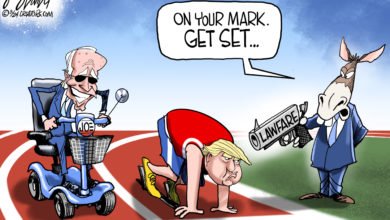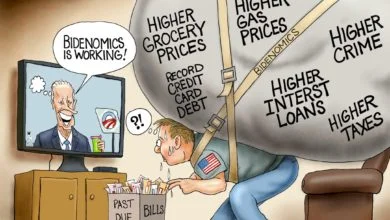Shockingly Irresponsible Fed Policy Led to 7% Inflation
The US Bureau of Labor Statistics just released the Consumer Price Index (CPI) increase for the month of December. The 0.5% increase means that for the entire year 2021, inflation was 7%, a 40-year high.
This poor result is primarily due to the shockingly irresponsible policy of the Federal Reserve.
For the past 40 years, the Fed has mostly kept the inflation rate at 3% or less. For the past decade, annual inflation has averaged just over 2%. Whenever there was even a hint of inflation, the Fed always stayed ahead of the curve.
For instance, at the end of 2016, there was a slight hint of inflation. The Fed raised interest rates eight times during the next two years. Fed officials said that their action took enough excess demand out of the economy to keep inflation low, but not too much demand to slow economic growth.
The U.S. Federal Reserve should have started a similar interest rate raising policy back in March or April. At that time, it was clear that the economy was growing and that excess demand was causing an increase in the inflation rate.
For most of the last decade, the CPI increased by 0.1% or 0.2% monthly. That meant the annual inflation rate was in the 2% range. Starting in January 2021, the CPI clearly pointed to increased inflationary pressure.
In January, the CPI increased 0.3%. In February it increased 0.4%. In March it increased 0.6%. And in April the CPI increased by 0.8%. Those data points alone should have been evident to the Fed that inflation was increasing and that unless Fed policy changed, 2021 would show the worst inflation in decades.
Instead, the Fed continued to purchase $120 billion monthly of government securities. It made these purchases by electronically printing money. That has increased the money supply — which has grown by about 20% in the last year.
Led to Inflated Excess Demand
The Fed also decided to keep interest rates near zero. This lack of action led to huge increases in excess demand, which is the primary reason for the high inflation we are experiencing today. Had the fed acted aggressively last spring, the inflation rate would likely be about half of the current level.
The Fed finally decided last November to slowly reduce the bond-buying program. Then, in December, it decided to speed up the reduction in the bond-buying program. Still, the plan at that time was to eventually stop the program by April. All of this was far too little, far too late, as the Federal Reserve should move more quickly.
May 2022 for Interest Rates Hikes Is Too Late
Worse, the Fed says they will not raise interest rates until sometime after April. By then, the inflation rate will approach 8% — and may even be higher depending on how quickly the reduction of cases from COVID-19 happens.
The Fed does not need to concentrate on reaching full employment. That’s because the 3.9% unemployment rate recorded at the end of 2021 is a de facto full employment level. In addition, Fed policy is not really geared to reaching full employment. More specifically, its policy has traditionally been to help the economy create enough jobs that there is full employment.
That was accomplished last Fall. Currently, there are more than 11 million job openings and less than 7 million unemployed Americans. Fed policy does not need to create more jobs, since the U.S. can’t fill the job openings that already exist.
Biden Administration Liberal Monetary Policy
Federal government spending has made the inflation problem worse. The Biden administration has done that by spending nearly $6 trillion more than it took in from tax revenue during the last two years.
That’s pure excess demand, which has led to yet more inflation.
Other Biden administration policy has also created inflation in the energy sector. This was done by taking action to reduce the supply of fossil fuels at a time when the demand is increasing because of the economic recovery. Higher energy prices lead to higher product prices.
The Biden administration policy is also at least partially responsible for the labor shortage and wage inflation. Its policy of giving free money to all Americans leads to higher inflation and encourages workers to stay out of the labor market.
The additional stimulus passed last spring was not needed considering the economy grew at more than 6–1/2% in the first half of last year.
Since last July, the economy has been producing more goods and services than before the pandemic. That means, in total, supply chain disruptions may be causing price increases in some specific markets, but cannot be significantly adding to the inflation problem.
That means even after the supply chain disruptions are resolved, we will still have inflation.
As long as the Fed keeps the expansionary monetary policy in place, the federal government continues to massively deficit spend, energy prices keep rising and there is wage inflation — the CPI will continue to increase.
It is time for the Fed to quickly reverse course and for the Biden administration to stop spending money it does not have.
Failure to do so quickly will result in an inflation rate for 2022 higher than the 7% today.




